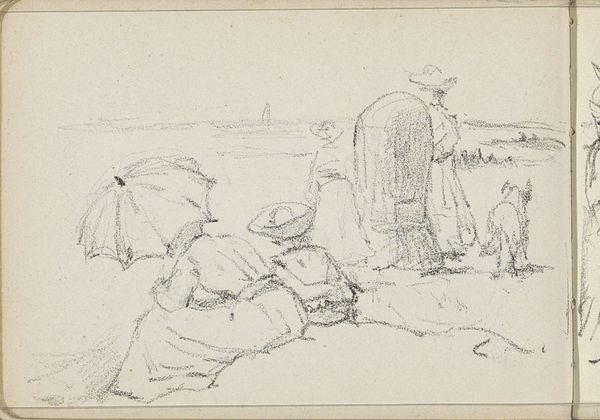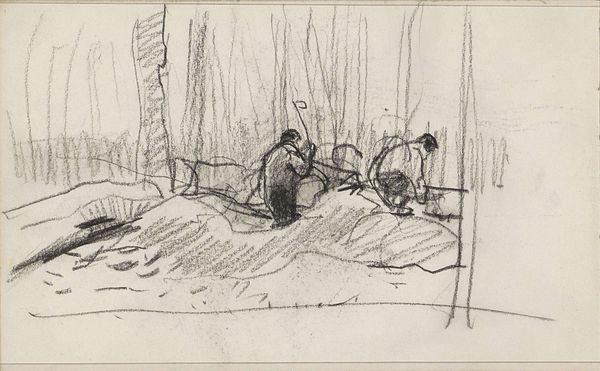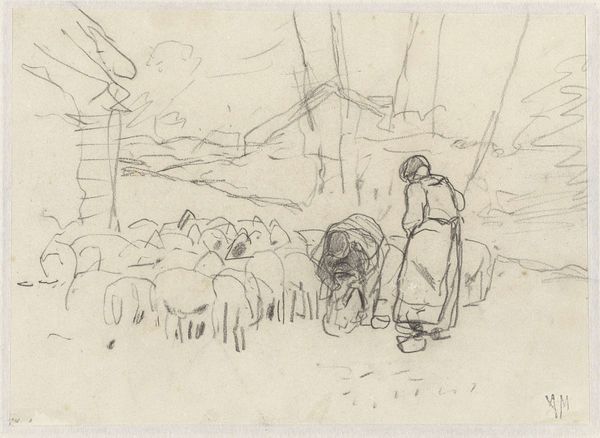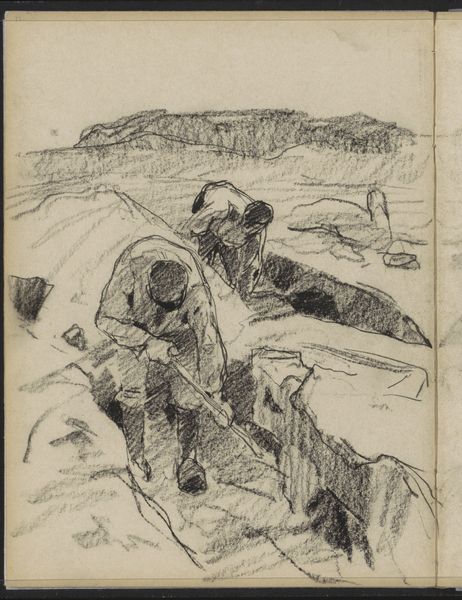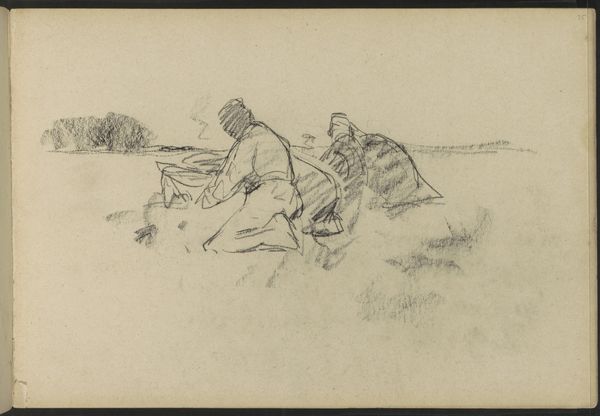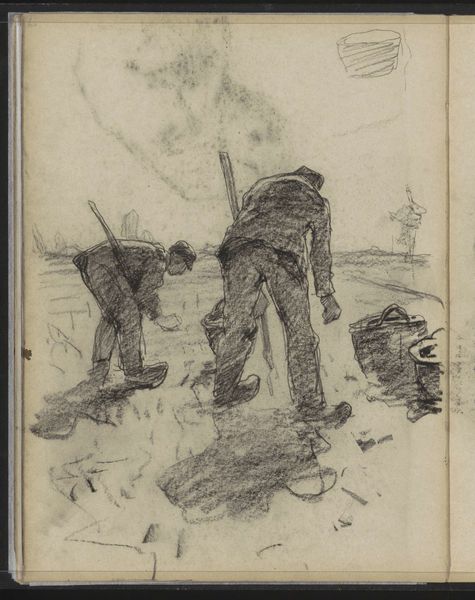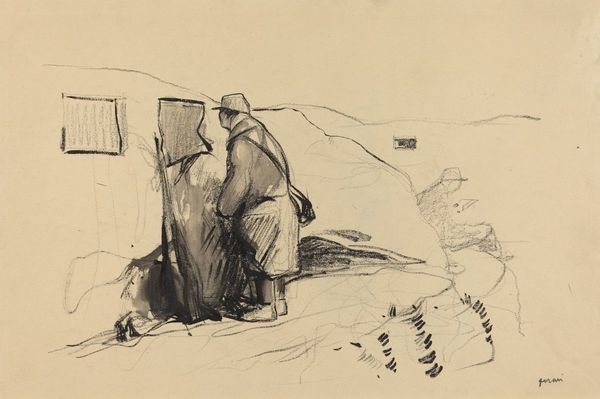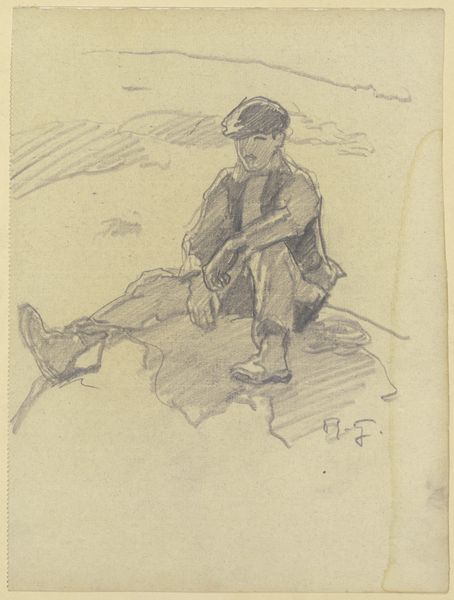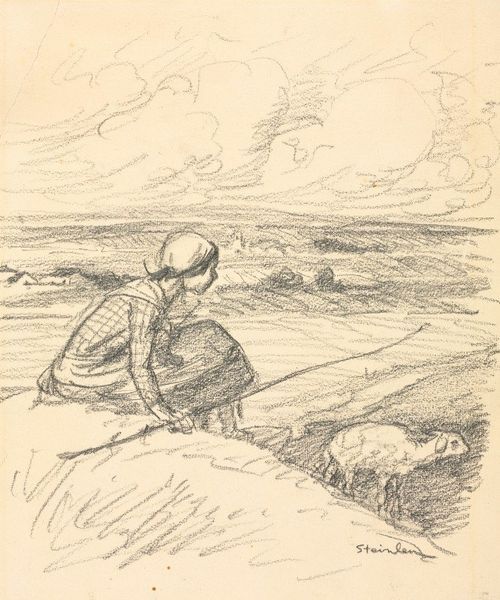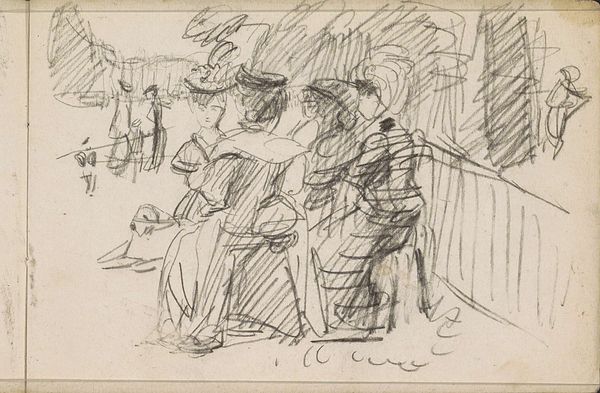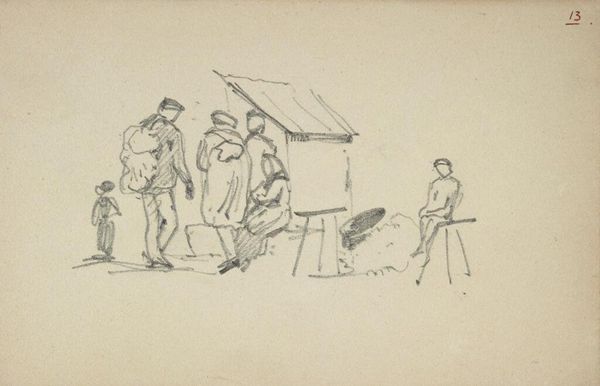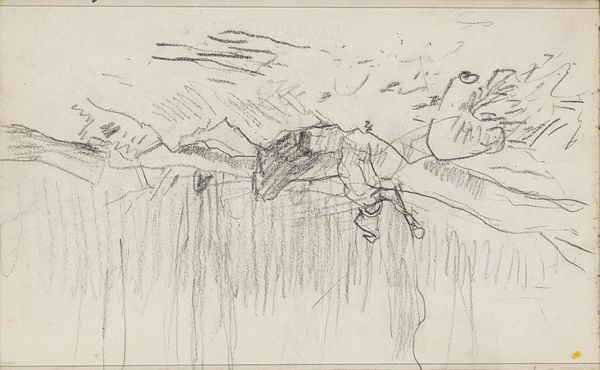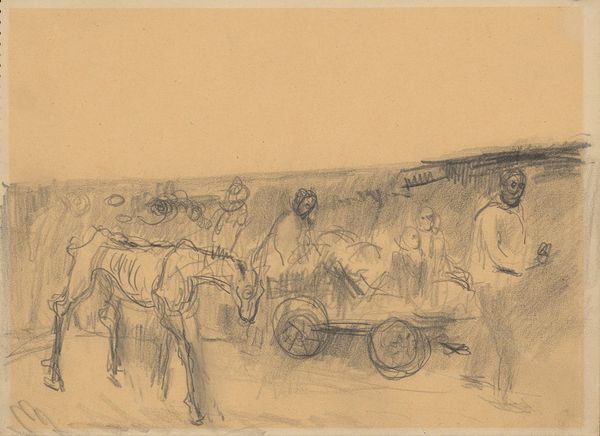
drawing, pencil
#
drawing
#
impressionism
#
sketch book
#
landscape
#
personal sketchbook
#
idea generation sketch
#
sketchwork
#
ink drawing experimentation
#
detailed observational sketch
#
pencil
#
sketchbook drawing
#
genre-painting
#
storyboard and sketchbook work
#
sketchbook art
#
realism
#
initial sketch
Copyright: Rijks Museum: Open Domain
Curator: Anton Mauve's drawing, "Aardappelrooiers," which translates to "Potato Harvesters," dates back to somewhere between 1886 and 1888, and it now resides here at the Rijksmuseum. Editor: Immediately, I’m struck by the sparseness, the sort of muted grief that emanates from this scene despite its humble subject. Curator: Grief? That's intense! It’s just people digging up potatoes. You’ve been reading too much radical theory. It feels like a glimpse into Mauve's private observational sketches—realism tinged with quiet intimacy. Editor: Well, think about it. The bent backs, the earth-toned palette... Potato harvesting, then as now, involved back-breaking labor. Consider who is performing this labor and their class. It’s almost a documentation of the brutal demands on the working class, specifically in agrarian societies. There is nothing bucolic about this scene to me. Curator: I suppose the sketch's immediacy, the almost frantic energy in those pencil lines, speaks to a reality beyond idyllic landscapes. Editor: Exactly! It reminds me of the way Millet portrayed rural life. A challenge to the romanticised depictions—the sort propagated by the aristocracy and the Bourgeoisie to soothe the class conscience. There are certainly intersections there. Curator: Yes, but Mauve—who, you know, was Vincent van Gogh's cousin-in-law—he focused on the details of daily life. Think of light, texture…a sort of tenderness amid the labor, wouldn't you say? Or, I could ask, what kind of politics would drive an aesthetic? Is the art the right kind? Editor: A fair question. Mauve's aesthetic, whether consciously or not, brings attention to those normally unseen. Curator: True. A sort of...visceral acknowledgment of human endurance and quiet struggle? I think that works. The drawing’s power rests in that tension, in that contradiction between harsh reality and understated artistry. Editor: Indeed. It prompts a dialogue about how we perceive and represent labor, class, and the hidden costs of everyday sustenance. So, you know, it is much more than people digging up potatoes.
Comments
No comments
Be the first to comment and join the conversation on the ultimate creative platform.
